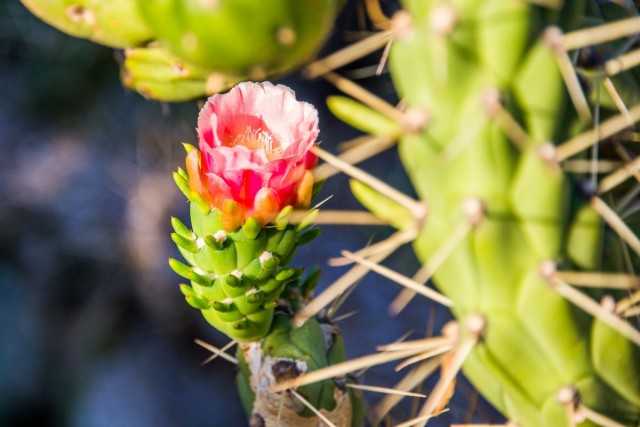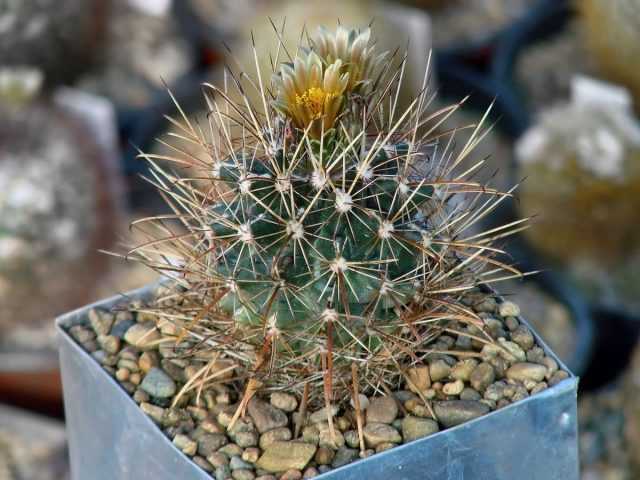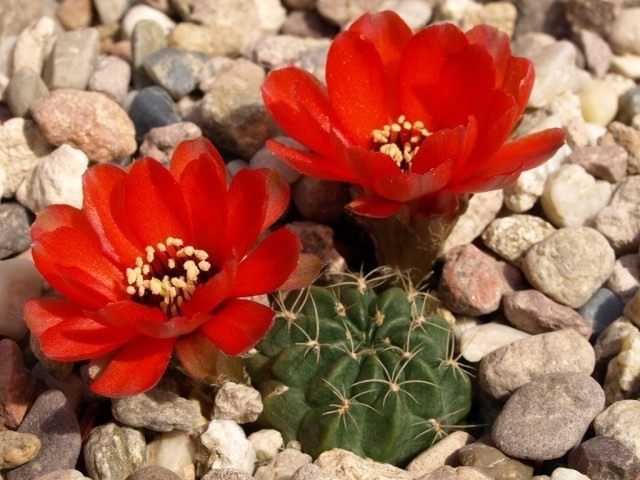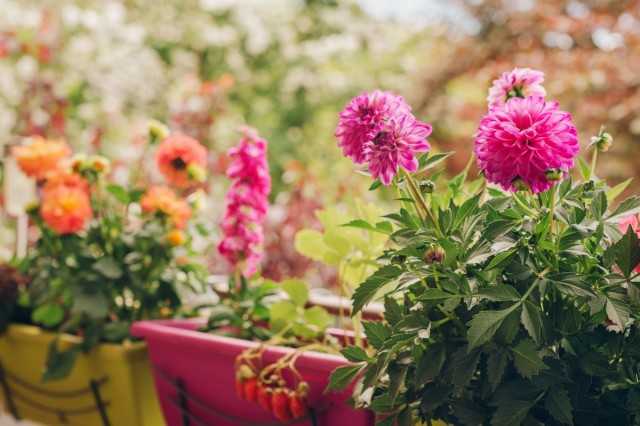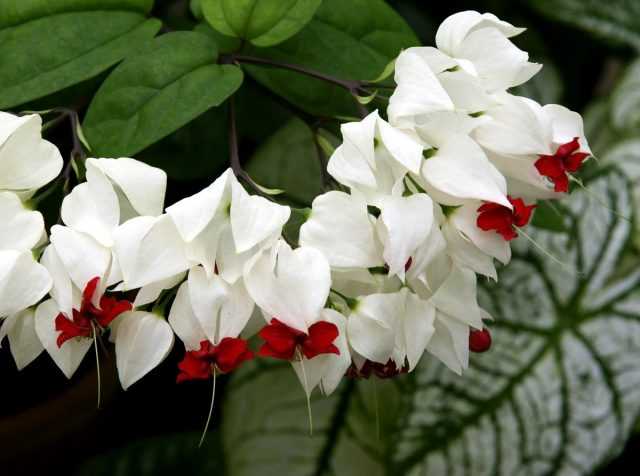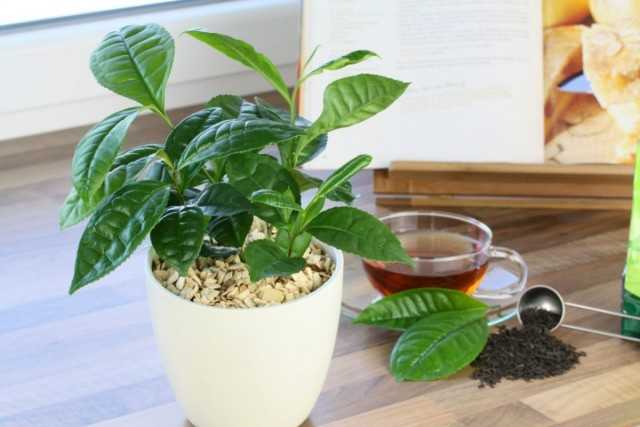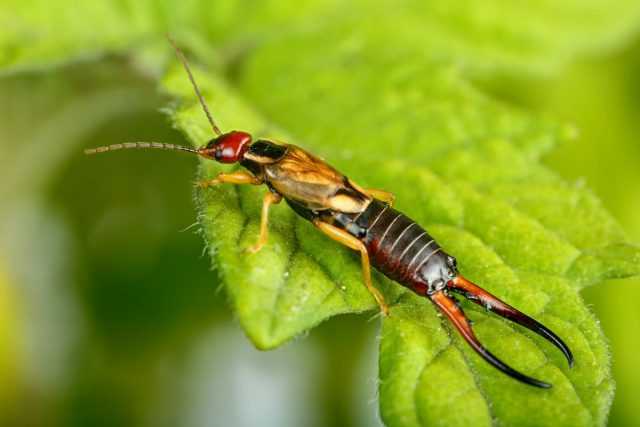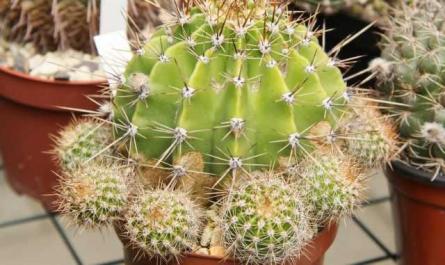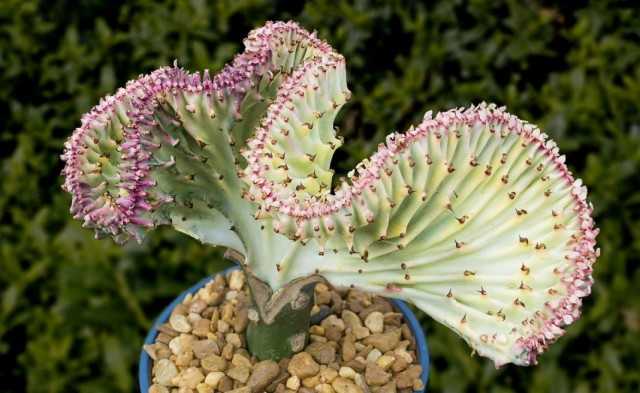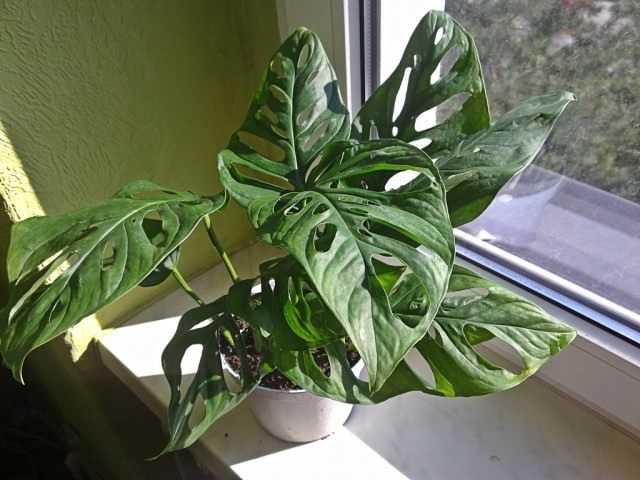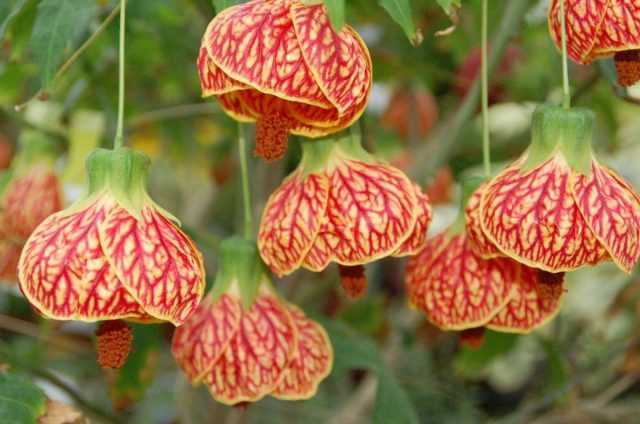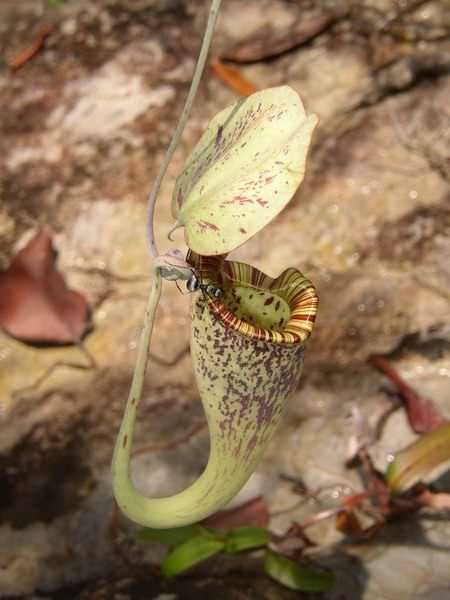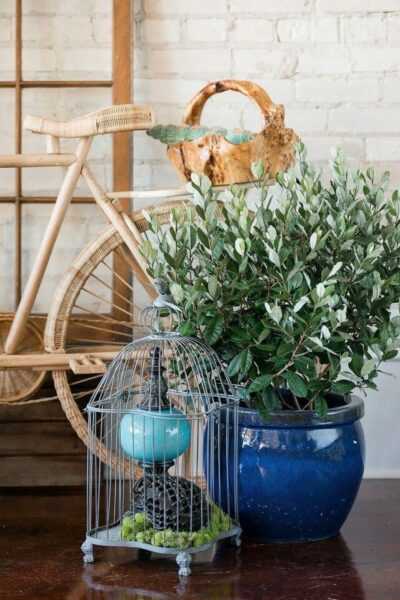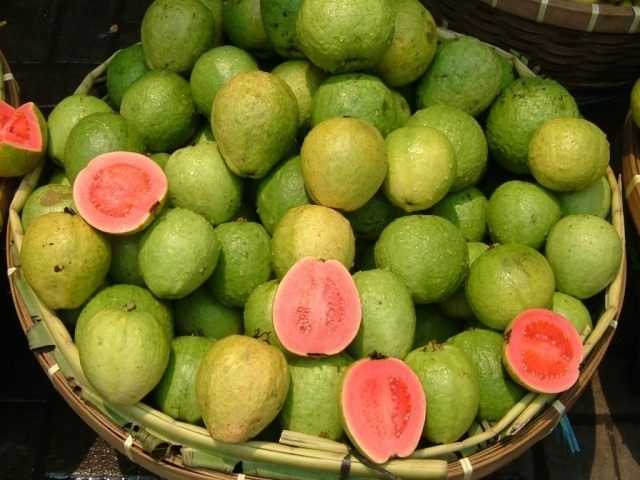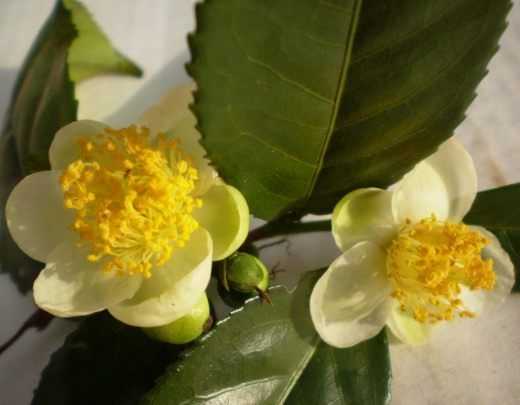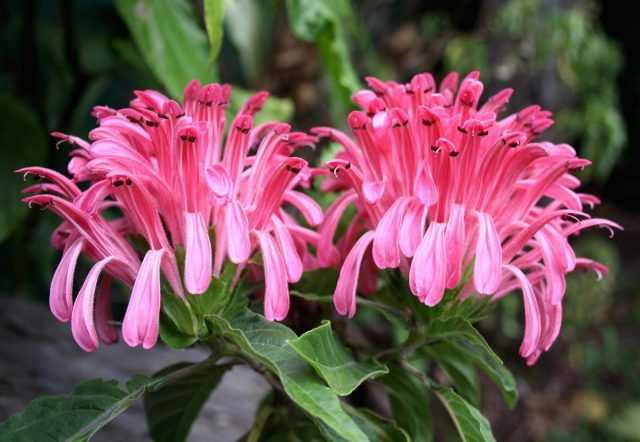Dieffenbachia (Dieffenbachia) Is a spectacular bushy perennial plant of the Aroid family (Araceae) with beautiful variegated foliage. The popular name of the plant is a light. Dieffenbachia can grow up to 2 meters in height, but the lower part of the trunk gradually becomes bare, as a result of which the plant loses its attractiveness. Despite some whimsicality, it is often used for landscaping interiors (it has been cultivated for 150 years). Read about the features of growing this indoor plant in the article.
Variegated dieffenbachia in pots
Contents:
Growing conditions dieffenbachia – briefly about everything
Dieffenbachia has a thick, succulent stem, more like a tree trunk, which bears a cap of large variegated leaves. The growth point is at the top of the shoot, but some species are able to bush. At the same time, dormant buds awaken at the base of the dieffenbachia shoot, and sometimes located higher.
The plant requires the following growing conditions:
Lighting. Shading in summer, good lighting in winter. In a too dark place, the leaves become smaller, and the plant loses its decorative appeal. Dieffenbachia will grow well under the protection of a tulle curtain near an east or west window.
Watering dieffenbachia. Abundant from spring to autumn, moderate in winter. The soil is kept slightly moist at all times, but should not be too moist. When watering with too hard water, the tips of the leaves turn brown.
Dieffenbachia propagation. Trunk cuttings of 5-7 cm, which are rooted with soil heating at 30 ° C. Some forms produce daughter shoots, which are cut and rooted. To rejuvenate the plant, the top with part of the trunk is cut off, it takes root well.
Air humidity. Dieffenbachia loves very humid air; regular spraying and washing of the leaves is required. Before spraying, make sure that the room is warm and does not “blow” from anywhere, otherwise you can harm the plant. If the room is about 18 ° C, it is better not to spray, but just periodically wipe it with a damp sponge.
Dieffenbachia transplant. Annually in spring – better at the end of April. The soil is a mixture of turf (4 parts), leaf (1 part), peat (1 part) and sand (1 part). Dieffenbachia are fast-growing plants, but due to the fact that the plants grow quite large, transplanting is difficult, in this case it is advisable to replace the top layer of the earth with very nutritious soil. It would be nice to add a little charcoal to the soil.
Dieffenbachia feeding. In the period from May to August, top dressing with complex fertilizer every two weeks. They do not feed in autumn and winter. With a lack of nutrients, the trunk from below is exposed much faster.
Undercutting. It does not need, when pulling the plant, the top can be pinned.
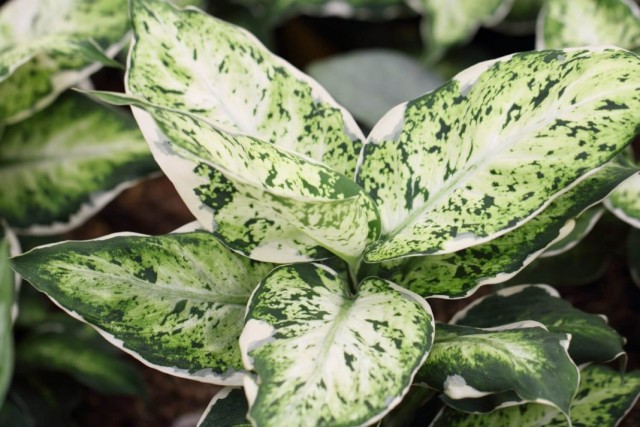
Diefenbachia care at home
Dieffenbachia, caring for which at home presents some difficulties, is still not as capricious as it is commonly believed. Dieffenbachia flower does not tolerate sudden temperature fluctuations. The most acceptable ambient temperature is + 20..25 ° С. In winter, not lower than + 17 ° С. The best air humidity is 70-80%, so the leaves should be sprayed frequently and washed once every two weeks.
This plant loves fresh air, but does not tolerate drafts. In summer, she feels good on the balcony, if there is a shady corner for her, and the rooms where Dieffenbachia lives should be regularly ventilated.
Dieffenbachia spotted loves light, but does not tolerate open sunlight, so in winter it must be kept in bright light, and in summer in partial shade. There are varieties of Dieffenbachia that are quite shade-tolerant, which allows them to be used in poorly lit interiors.
The soil in the dieffenbachia pot should always be moist, but not too wet. Waterlogging of the soil is especially dangerous at low temperatures. This can cause rotting of the roots and stems of the plant. Warm, settled water is suitable for irrigation. During the growth period, from spring to autumn, dieffenbachia should be occasionally fed with fertilizers, and in winter, watering and feeding should be reduced, but the earthen coma in the pot should not dry out.
In rooms, some dieffenbachia can grow up to 2 meters, and when watering is insufficient, the lower leaves fall off and the plant becomes like a palm tree. In an old plant, the lower leaves die off and dry up, which is natural, and there is nothing to worry about. If the appearance of a bare-stemmed plant does not suit you, cut the stem to a height of 10 centimeters from the root, dieffenbachia will give young shoots, and the top can be rooted.
Dieffenbachia, the transplant of which became necessary due to the suspension of growth or due to a disease of the plant, is transplanted into a new pot with an earthen mixture consisting of turf, peat soil and sand in a ratio of 2: 4: 1. At the same time, damaged areas are removed and treated with charcoal. Planned dieffenbachia is transplanted annually in the spring. At the same time, the size of the pot is increased, and they do not forget to put drainage from broken bricks, etc. on the bottom of the pot.
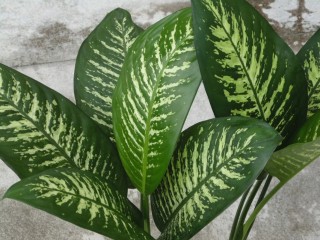

Dieffenbachia propagation
You can use two methods of propagation of dieffenbachia.
- apical shoot with leaves, which is cut from the top of the plant;
- pieces of stem about 5-7 cm long, which is used as a stem cutting.
Some dieffenbachias produce side shoots that can also be used for rooting. The soil for the cuttings should be composed of peat and sand (1: 1). For rooting, a temperature of at least + 25 ° C and high humidity are needed, so the seedlings are covered with a jar or polyethylene, watered and sprayed moderately. When the seedlings take root and release leaves, they are planted in a permanent place.
Diseases and pests of dieffenbachia
With unfavorable lighting and violation of the irrigation regime, dieffenbachia loses its decorative effect and begins to hurt. So, when the soil dries out, cold drafts or at low temperatures, the leaves turn yellow and dry. In too bright light or in direct sunlight, the leaves change color, brown spots may appear on them.
Dieffenbachia, the diseases of which are caused by these reasons, should be moved to a less illuminated, warmer place – where there are no drafts. The plant must be watered on time, and the leaves must be sprayed and washed with warm water.
Despite the fact that dieffenbachia juice is poisonous, this plant is affected by pests – spider mites and scale insects. Occasionally it can be affected by aphids.
spider mite – a very small red spider. It appears on the underside of dieffenbachia leaves and envelops them with thin white cobwebs. It is destroyed by spraying and washing the leaves, especially from the underside, with water, a weak tobacco infusion with green soap, treatment with systemic drugs – acaricides. When washing the leaves with infusions with green soap, after 2-3 hours, the leaves must be washed with warm water.
Read more about the fight against spider mites in the material: Spider mites are an ubiquitous pest.
Shield, or shield aphid got its name from the waxy shield that covers the body of an adult pest. At first, at a young age, the scale insect is hardly noticeable, but it multiplies rapidly, covering the stems and leaves with dark spots. Adults are motionless and sit under shields, from under which larvae crawl out and creep throughout the plant.
Adult pests, along with shields, are removed with a damp swab, but you still need to treat the entire plant with an insecticide to remove the larvae.
Read more about the fight against scale insects on indoor plants in the material: We save plants from scale insects and false scale insects.
aphid – a small insect can be green, gray or black in color. It settles on the underside of the dieffenbachia leaf and feeds on plant sap, which leads to drying and folding of the leaves. It multiplies rapidly. Destroyed by insecticides, which are sold in stores or solutions of nicotine sulfate in water with soap in a ratio of 1 g. nicotine sulfate per 1 liter of soapy water.
After processing the plant in a day, dieffenbachia must be well washed, covering the soil with polyethylene. If necessary, the processing is repeated.
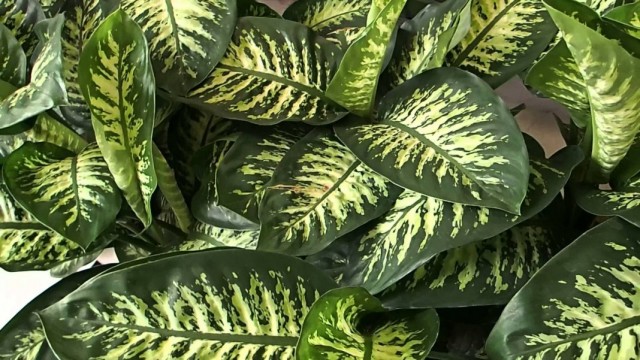
Dieffenbachia types
Today, there are about 30 types of dieffenbachia, but the most common are Dieffenbachia spotted, it’s the same Dieffenbachia Seguina (Dieffenbachia Seguine), Dieffenbachia Bause (Dieffenbachia bausei) and Dieffenbachia Oersted (Dieffenbachia oerstedii).
Do you have this houseplant growing? What kind? Share your experience in the comments to the article or on our Form!
